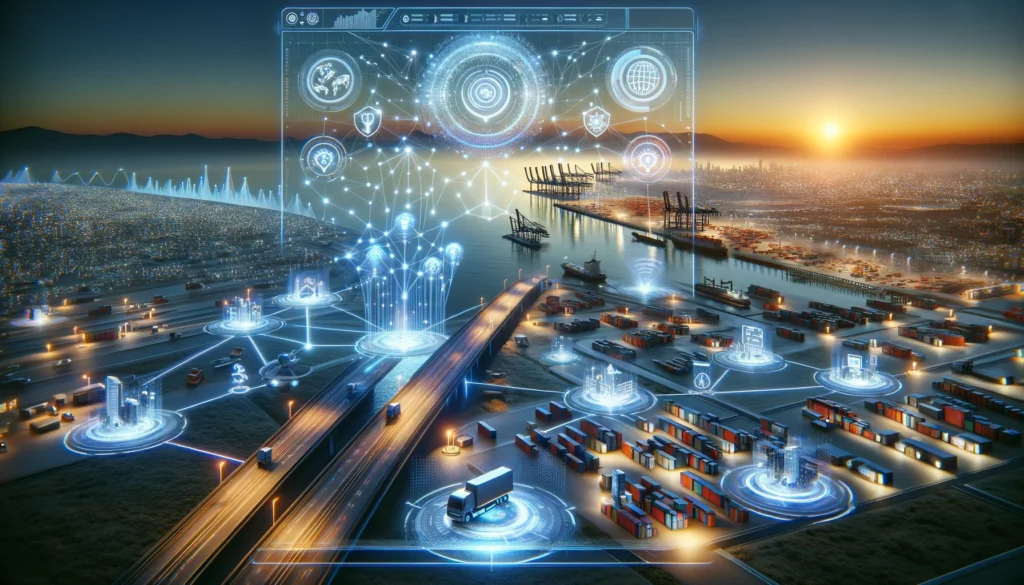There are a lot of areas where AI can be focused and make a difference, including employee productivity, marketing, sales, customer support, manufacturing, medicine, aeronautics, robotics, and governance. But one of the most interesting is logistics. During the Covid pandemic, we saw that everything we buy and consume depends on logistics. If we don’t have access to the materials and technologies we need to build products or deliver food, everything shuts down.
But managing logistics often looks more like witchcraft than science because our ability to anticipate and mitigate logistics problems, particularly when supply chains have become global in nature, has been exceedingly weak. AI could, and in many cases will, fix this. Let’s explore that this month.
Logistics
Logistics is the coordination of a complex operation involving many people, facilities, or supplies. As companies grow to become multi-nationals, logistics (a function I audited while working as an auditor at IBM) can become a complex nightmare where one unanticipated failure can bring down an entire manufacturing line, or if critical enough (like an inability to get people to do critical work) it can shut down large operations and potentially put companies out of business.
To ensure a supply chain and really secure it, you need to factor in global events like conflicts, potential pandemics, weather, partner health (every partner in the supply chain), currency, direct and indirect costs, critical advances, and supply conflicts. You also need to have a clear, real-time idea of what is going on with demand, litigation surrounding your products or components (which could, as Apple recently discovered with the Apple watch, result in your product being blocked), and any potential or existing related health and safety issues with what is being supplied.
In effect, you have this huge mass of data you must capture, analyze in real-time, and project into the future so you can anticipate outages and have appropriate and ready contingency plans spun up and ready to go as you need them to keep manufacturing lines and build schedule integrity intact.
AI to the Rescue
This is what AI is better at doing than people, which is analyzing large data sets and providing advice on decisions in real-time based on changing conditions. And you can use simulations of potential future events to help train and validate the advice the AI provides and ensure that advice is both timely and accurate.
Take the pandemic. A properly trained AI would have flagged the COVID-19 virus in China based on a similar event a year earlier as a potential serious logistics problem and advised initial redundancy outside of China and a move toward highly automated suppliers as contingencies should the virus become a pandemic. In other words, based on historical data, it would realize that China was unlikely to act timely and that the outcome of the outbreak would hit any Chinese company quickly, resulting in a shutdown and any heavily staffed shop a bit later, resulting in potentially catastrophic outcomes.
To make this work, you’d need reliable data from every part of the supply chain and all the environmental data you could capture. This would tend to favor suppliers who were themselves data-focused and who had deployed their own AI controls so that the information being transmitted to the logistics AI was both timely and as complete as possible. You’d include linked systems that do demand forecasting and supply planning to make sure you didn’t over-supply, and you’d want any of the warehouses to be automated, particularly regarding inventories, because unplanned or uncaught shrinkage would be problematic.
You’d prefer everything to be as automated as possible to reduce the risks associated with illnesses, strikes, or staffing availability to be minimized and the related services to be more dependable than they currently are. You’d want costs updated in real-time and projected to ensure your costs don’t spike unexpectedly so you can mitigate the problem with other suppliers. You’d want the data entry and the rest of the accounting process to be as automated as possible for accuracy and reliability. Finally, you’d want the resulting system to connect to marketing and sales so that any shortages would have an immediate impact on demand generation to ensure customers aren’t being promised dates that are no longer viable.
Wrapping Up
Using AI in logistics and doing it right won’t be inexpensive but with the right tools, deep data access to partners, and a well-trained AI, system logistics nightmares could become a thing of the past. Companies like Salesforce, IBM, Purolator, Amazon, and others are creating and using AI technology ever more aggressively to ensure that the logistics nightmares we saw during the pandemic and global climate change events become a thing of the past. Granted, getting to this ideal will take time for most, and the cost will be high, but the cost of logistics failures is potentially much higher, making a focus on creating and providing AI tools a top priority in these increasingly troubled times.
- The HP OmniBook X Flip 2-in-1 16-Inch: Your New Digital Swiss Army Knife (Now in Glorious Atmospheric Blue) - June 25, 2025
- The Open AI Avalanche: Why AMD’s Collaborative Spirit Is Outmaneuvering NVIDIA’s Empire - June 22, 2025
- Lenovo Embraces OpenBMC: A Step Towards Greater Transparency and Control in the Data Center - June 17, 2025




Pingback: Why the logistics and supply chains focused on AI need resilient networks and always on
Pingback: Why AI-Pushed Logistics and Provide Chains Want Resilient, At all times-On Networks - UK Tech Insider
Pingback: Why AI-Pushed Logistics and Provide Chains Want Resilient, At all times-On Networks – blog.aimactgrow.com
Pingback: Why AI-Driven Logistics and Supply Chains Need Resilient, Always-On Networks – Swisscryptodaily.ch